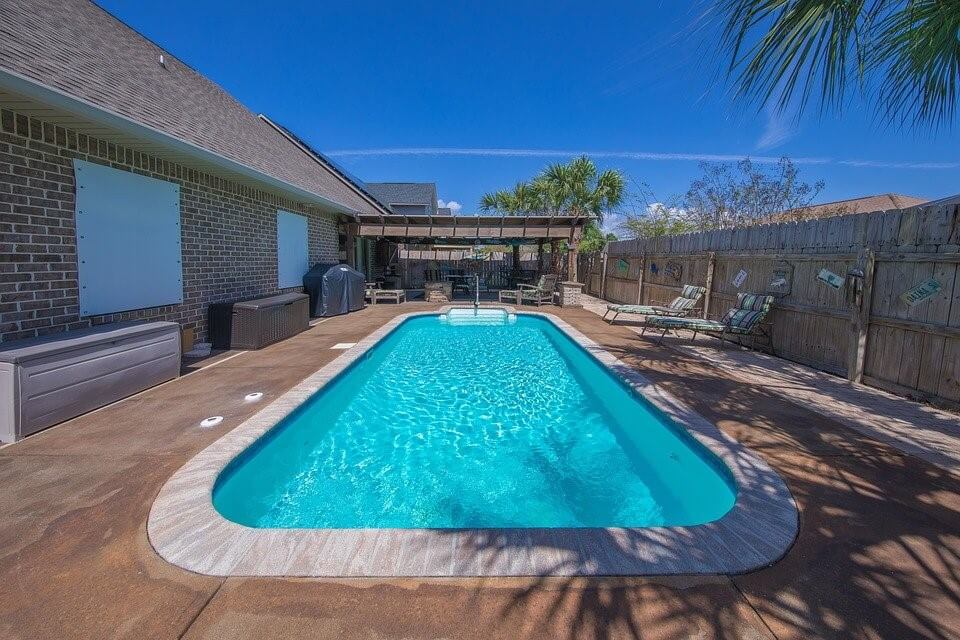
Pool
When it comes to pool maintenance, it’s not uncommon to encounter various issues. Understanding how to troubleshoot common pool problems can save you time and money. Here are some common pool problems and their solutions.
Cloudy Water:
- Test the water chemistry and adjust the pH and chlorine levels as needed.
- Ensure proper filtration and circulation by cleaning or backwashing the filter.
- Consider using a clarifier or flocculant to aid in water clarity.
- Shock the pool to eliminate any organic contaminants.
Algae Growth:
- Brush the affected areas to loosen the algae.
- Adjust the pH and chlorine levels to their appropriate ranges.
- Shock the pool with a high dose of chlorine to kill the algae.
- Use an algaecide to prevent future growth.
Green Water:
- Test the water chemistry and adjust the pH and chlorine levels.
- Shock the pool with a high dose of chlorine to kill algae and bacteria.
- Run the filter continuously until the water clears up.
- Backwash the filter if necessary.
Low or No Water Flow:
- Check if the pump is running and the filter is clean.
- Inspect the pool skimmer and pump basket for debris and clean if needed.
- Check for any clogs or obstructions in the pump impeller or plumbing lines.
- Ensure the valves are set correctly to allow proper water flow.
Pump Not Priming:
- Check the water level in the pool to ensure it’s above the skimmer level.
- Check for air leaks in the pump’s suction line and repair if necessary.
- Clean or replace the pump basket and ensure it fits securely.
- Prime the pump manually by filling the pump basket with water before starting.
- Inspect the pool equipment, such as pumps, filters, and valves, for visible leaks.
- Check for any cracks or damage in the pool structure.
- Monitor the water level over a period of time to identify the source of the leak.
- Consult a professional pool repair service if the leak persists.
High Total Dissolved Solids (TDS):
- Test the TDS levels using a water testing kit.
- Partially drain and refill the pool to dilute the TDS.
- Avoid adding excessive chemicals or using low-quality pool additives.
- Maintain proper pool water balance to minimize TDS buildup.
Heater Not Working:
- Check if the thermostat is set to the desired temperature.
- Ensure the gas or electrical supply is turned on and functioning correctly.
- Clean or replace the pool filter to ensure proper water flow to the heater.
- If the issue persists, contact a professional pool heater repair service.
Remember, pool problems can vary depending on the specific circumstances and equipment. It’s essential to follow the manufacturer’s guidelines and, when in doubt, consult a professional pool technician for assistance. Regular maintenance, proper water chemistry, and diligent troubleshooting will help keep your pool in excellent condition.






